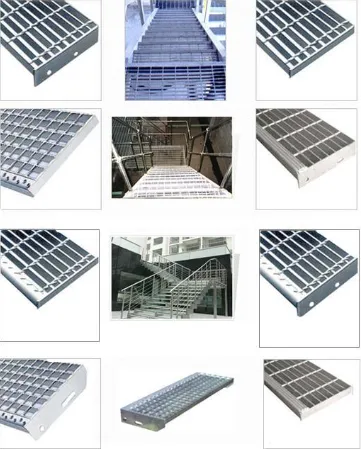Understanding the Cutting of Perforated Metal Sheets
Perforated metal sheets are essential components in many industries, offering versatility in applications ranging from architectural designs to industrial uses. These sheets, characterized by their array of holes, can be manufactured from various metals, including stainless steel, aluminum, and copper. One crucial aspect of working with perforated metal sheets is cutting, which requires precision and an understanding of the material's properties.
What is Perforated Metal?
Perforated metal is created by puncturing a sheet of metal with a pattern of holes. The size, shape, and arrangement of holes can vary widely based on design specifications and aesthetic preferences. The advantages of using perforated metal include enhanced airflow, light penetration, aesthetic appeal, and reduced weight while maintaining structural integrity.
Cutting Techniques
When it comes to cutting perforated metal sheets, a variety of methods can be employed. The choice of technique depends on the material's thickness, the complexity of the design, and the precision required. Here are several common cutting methods
1. Laser Cutting This method involves using a high-powered laser beam to cut through metal sheets. Laser cutting is precise and allows for intricate designs, making it a preferred choice for detailed patterns in perforated metal. Additionally, it minimizes the heat-affected zone (HAZ), preserving the material's properties.
2. Waterjet Cutting Waterjet cutting utilizes a high-pressure jet of water, often mixed with abrasive materials, to cut through metal. This method is particularly effective for thicker sheets and produces smooth edges without the constraints of heat. It is suitable for sensitive materials that could be affected by heat.
3. Plasma Cutting Plasma cutting employs an ionized gas to produce high temperatures capable of melting metal. This method is fast and efficient, making it ideal for cutting larger sheets where precision is less critical. However, it may not be suitable for very intricate designs due to the heat generated.
4. Shearing Shearing is a mechanical process that involves cutting the metal sheet using a pair of blades. This method is generally used for straight cuts and is not suitable for intricate patterns. However, it is a quick and economical option for larger projects.
5. Nibbling Nibbling is a process where small bits of metal are removed to create a desired shape or design. This method can produce more intricate patterns than shearing and is particularly useful for smaller sheets or specialized designs.
Choosing the Right Method
cutting perforated metal sheet

Selecting the appropriate cutting method involves several considerations
- Material Thickness Thicker sheets may require more robust cutting techniques, like laser or plasma cutting, while thinner sheets can be efficiently cut with shearing or nibbling. - Complexity of Design Intricate designs often necessitate the precision of laser or waterjet cutting, while simpler shapes can be effectively made using shearing.
- Production Volume For high-volume production, methods like laser cutting may be more efficient despite higher initial costs.
- Cost Budget is always a consideration, with methods like shearing being more economical for large but simple cuts.
Post-Cutting Considerations
After the cutting process, additional factors come into play, including
- Finishing Edges may require finishing processes, such as deburring or sanding, to remove sharp edges and provide a smooth finish.
- Quality Control Ensuring that the cut meets the required specifications is crucial. This may involve visual inspections or measurements to confirm that hole sizes and patterns are accurate.
- Material Treatment Depending on the intended application, treated or coated surfaces may be necessary to enhance durability and corrosion resistance.
Conclusion
Cutting perforated metal sheets is a critical aspect that combines precision with the right techniques and materials. By understanding the various cutting methods and considerations, manufacturers can ensure that they produce high-quality products that meet the diverse needs of their applications. As industries continue to evolve, the demand for innovative solutions in perforated metal cutting will undoubtedly grow, driving advancements in technology and techniques.
-
Turn Down the Noise: The Future of Highway Sound Barriers
NewsApr.09,2025
-
Silence the Sound: The Power of Highway Noise Barriers
NewsApr.09,2025
-
Reduce Road Noise Effectively with Highway Noise Barriers
NewsApr.09,2025
-
Noise-Free Living: How Highway Barriers Make a Difference
NewsApr.09,2025
-
Engineered for Silence: Highway Noise Barriers for Every Road
NewsApr.09,2025
-
Effective Noise Control: Highway Barriers for a Quieter Tomorrow
NewsApr.09,2025
Subscribe now!
Stay up to date with the latest on Fry Steeland industry news.

